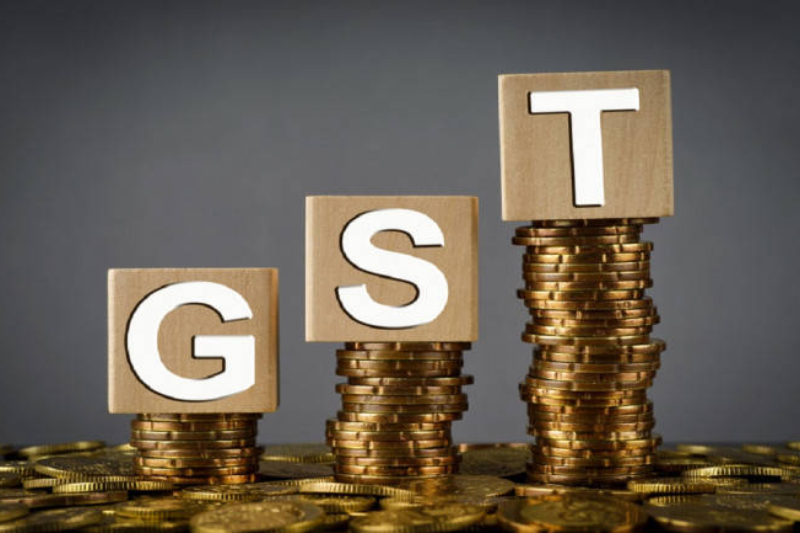- Sponsored -
Narendra Modi’s GST turns one tomorrow, government plans celebrations nationwide

The Goods and Services Tax completes one full year of implementation, there are many major events that stakeholders have brought about in the year gone by. The Central Board of Indirect Taxes and Customs (CBIC), formerly known as Central Board of Excise and Customs, has announced July 1, 2018 as the GST Day, to commemorate the first year of the unprecedented reform in Indian taxation laws.
- Sponsored -
The finance ministry on Saturday said that it binds the country into an Economic Union as it has subsumed over a dozen local levies and transformed India into “one nation, one tax”. Goods and Services Tax (GST) was rolled out in the intervening night of June 30 and July 1, last year, in a ceremony held in the Central Hall of Parliament.
“Union Minister for Railways, Coal, Finance & Corporate Affairs Piyush Goyal will preside over as the Chief Guest of the event and Minister of State for Finance, Shri Shiv Pratap Shukla will be the Guest of Honour,” the finance ministry said in a statement.
Meanwhile, the Finance Ministry has also acknowledged certain challenges that GST will pose, despite its “multiplier effect” on the economy. “A change as comprehensive as GST is bound to pose certain challenges not only for the government but also for the business community, tax administration and even common citizens of the country,” the ministry said today.
“GST will have a multiplier effect on the economy with benefits accruing to various sectors such as exporters, small traders and entrepreneurs, agriculture and industry, common consumers,” the ministry added. It said the introduction of e-way (electronic way) bill is a “monumental shift” from the earlier ‘Departmental Policing Model’ to a ‘Self-Declaration Model’. “It envisages one e-way bill for movement of the goods throughout the country, thereby ensuring a hassle-free movement of goods throughout the country,” the ministry said.
Transporter of goods worth over Rs 50,000 have to generate an e-way bill and show it to GST inspector, if asked. The inter-state e-way bill system was introduced on April 1. As regards intra-state e-way bill, it was rolled out in phases from April 15.
Also Read: IMF suggest India: Streamline, simplify GST for good growth rate
“GST will have a multiplier effect on the economy with benefits accruing to various sectors such as exporters, small traders and entrepreneurs, agriculture and industry, common consumers,” the ministry was quoted as saying by PTI.
Here’s a look at what has worked and what hasn’t:
There have been reforms being made in every iota of businesses in the nation.
What’s worked:
1. Inflation rate hasn’t risen: The multi-slab structure has helped in aiding the single tax reform to not result in inflation like it has in other countries across the world. It ensured the levy was as close as possible to the existing rate, which meant the incidence of tax didn’t rise. The second factor was the anti-profiteering authority.
2. Single National Market: Long queues of trucks at state borders disappeared as checkposts were dismantled, creating a seamless national market. These barriers had restricted movement of goods across the country, leading to huge delays and increasing transaction costs for the logistics sector, eventually translating into higher costs for consumers.
3. One tax nationally: A consumer in Kanyakumari now pays the same tax on an item as one in Jammu & Kashmir. GST has also allowed businesses to streamline distribution systems—production, supply chain, storage—to make them more efficient, having previously been forced to design them keeping state taxes in mind.
4. Everyone wins: As many as 17 taxes and multiple cesses were subsumed into GST, aligning India with global regimes. Central taxes such as excise duty, services tax, countervailing duty and state taxes — including value added tax, Octroi and purchase tax — were all rolled into one. The new regime provided for free flow of tax credits and did away with cascading due to tax on tax, boosting company financials and resulting in reduced prices for consumers.
What hasn’t worked:
1. Cumbersome registration system: Multiple registration requirements have complicated things for industry, which was expecting simplicity. In many cases, registration is required in all states. Companies fear that multiple audits and assessments due to multiple registrations could make life more difficult for them going forward.
2. Compliance has miles to go: The biggest dampener was the compliance process, as information technology glitches took more than the anticipated time to be resolved. The filing system that was put in place in the beginning was quickly abandoned as businesses struggled with compliance. A new return form is being crafted to help make the process much less painful for businesses and is likely to be available soon.
3.New cesses crop up: While GST scrapped a multiplicity of taxes and cesses, a new levy in the form of compensation cess was introduced for luxury and sin goods. This was later expanded to include automobiles. A new cess on sugar is also being examined.
4.Refunds problem for exports: The refund mechanism for exporters, including data matching law, besides procedures governing them, have irked the sector, particularly smaller entities that saw their working capital requirements rise. Though several efforts have been made to address the issue, it may require more intervention.
However, in the wake of rising fuel prices, experts have called for bringing petrol and diesel under GST. But the question stays whether this can help provide relief to customers. In December last year, former finance minister Arun Jaitley had told the Rajya Sabha that the Central government was in favour of bringing petroleum products under the ambit of GST after building a consensus with states. Oil Minister Dharmendra Pradhan has also backed the call to bring the two fuels under GST.
- Sponsored -
